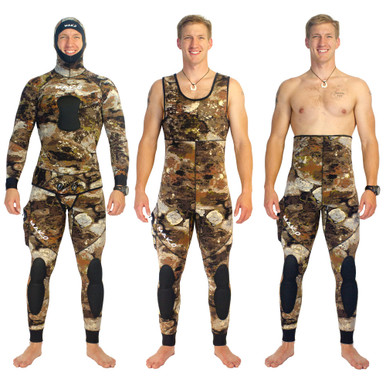loady
Contributor
How to jmj compare to Henderson?
Welcome to ScubaBoard, the world's largest scuba diving community. Registration is not required to read the forums, but we encourage you to join. Joining has its benefits and enables you to participate in the discussions.
Benefits of registering include

Hi @loadyHow to jmj compare to Henderson?
I agree, fit and thickness of neoprene are key. They other element to warmth is longevity and compressibility of neoprene over time and number of dives. The only company that was claiming their neoprene is compression resistant is Wetwear. Henderson wouldn’t tell me the make and model of their neoprene. I think at the scuba show JMJ said they use various brands/ makes and models of neoprene. Is that correct or what compression resistant neoprene do you use? ThanksHi @loady
All JMJs are custom-fit to your measurements; for that reason alone they are quite different than any stock sized suits. For more about why this matters, please see The advantages of a custom fit wetsuit: warmth and comfort - JMJ Wetsuits
If you are in the market for a wetsuit feel free to give us a call at 310-212-3040.
Thanks,
Derek & JMJ
I don't know whether or not you posed your question to JMJ, but they certainly use compression-resistant neoprene. Please note it's mentioned at Wetsuit materials - JMJ WetsuitsThe only company that was claiming their neoprene is compression resistant is Wetwear
That is correct; JMJ does use different types of neoprene, with a focus on using the material(s) that work best for the individual customer and the intended use. They have many years of experience, know their materials, and can source many different types of neoprene.I think at the scuba show JMJ said they use various brands/ makes and models of neoprene. Is that correct or what compression resistant neoprene do you use?
I wrote "They" because I don't make the wetsuits nor do I source the material.Why do you write They?
As mentioned in my SB bio here, I dive JMJ wetsuits, and work with JMJ on web stuff. I do contribute feedback to "R&D".Sales talking not engineering or research and development
If you'd like to know more about what material is used in which JMJ wetsuit, please feel free to call the shop at 310-212-3040. Let them know which suit you're interested in and they can give you more information about suit options and what materials are used.None of these companies will reveal the actual make brand and model neoprene.


